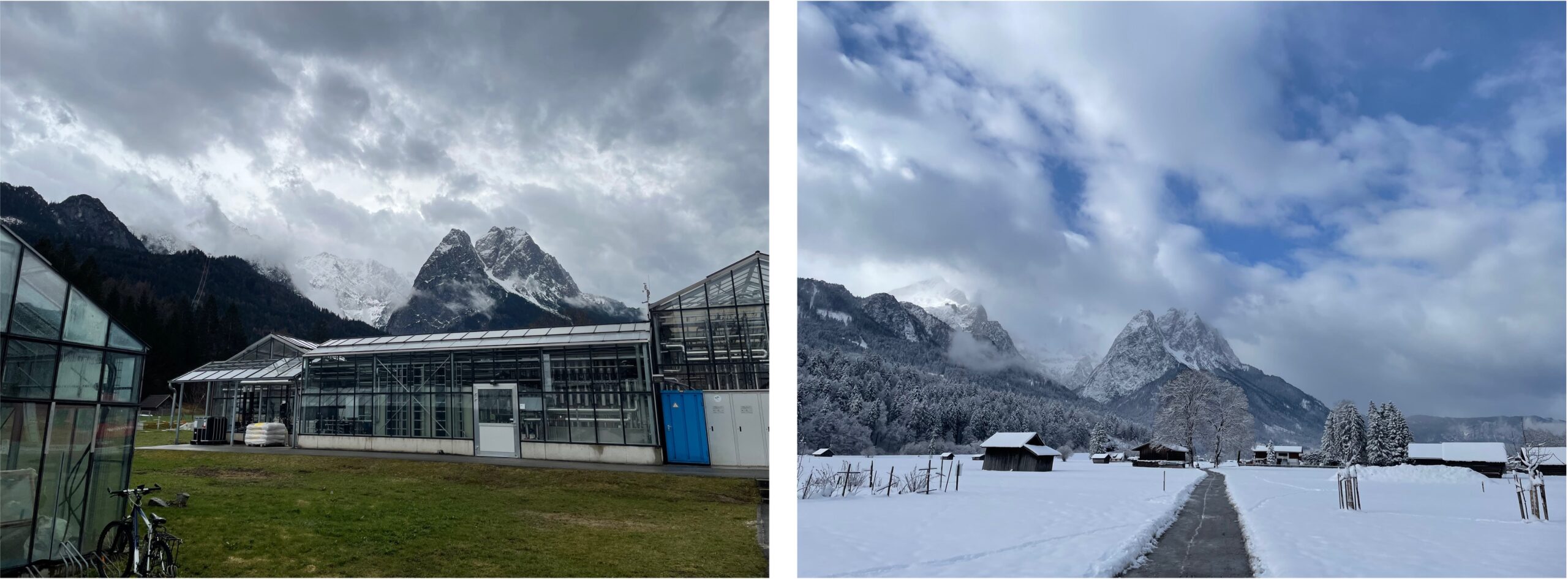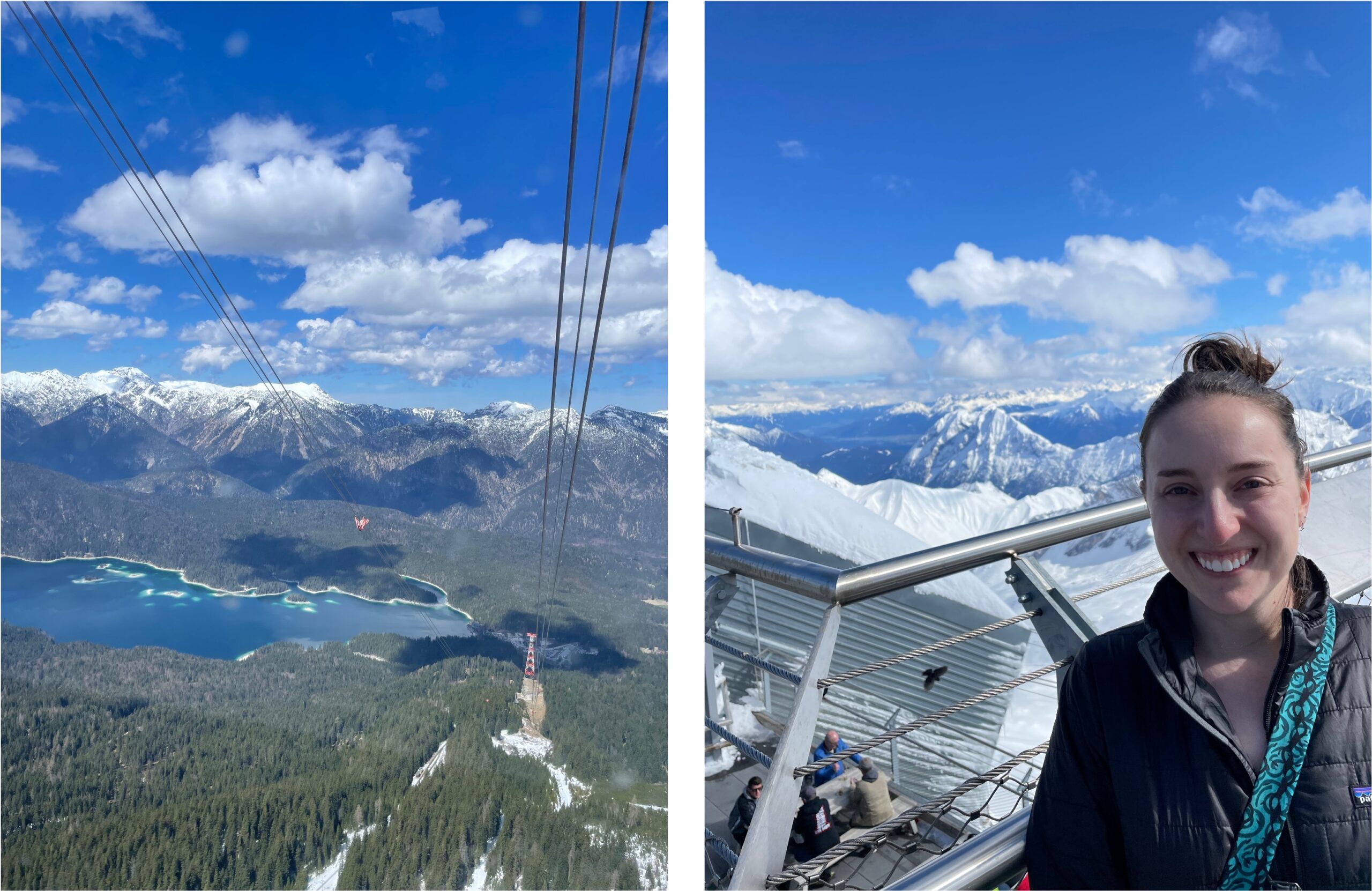Justine Missik, recipient of the 2023 Secondment Program award, has completed the program and wrote the following to share with the FLUXNET community:
For my Secondment Program, I spent four weeks working with Dr. Nadine Rühr’s research group at KIT-Campus Alpin in Garmisch-Partenkirchen, Germany. Dr. Rühr’s group has been working in the cutting-edge of understanding tree physiological responses to drought stress and recovery from stress, and my goal was to learn from the work her group has been doing and use this knowledge to improve the stress mechanics in the FETCH canopy transpiration model.
On my first day, I got a tour of Dr. Rühr’s high-tech greenhouse facility, including custom tree chambers where whole-tree exchange of CO2 and H2O can be continuously measured, and soil respiration can be measured separately from the aboveground fluxes. Controlled stress-response experiments from this facility provide a level of detailed knowledge that can’t be achieved from field observations.

Left: The greenhouse facility at KIT-Campus Alpin. Right: The footpath where I walked to work each day.
Up until this point, my work on FETCH had used using eddy covariance and sap flux measurements to help constrain model parameters and evaluate performance. My time with Dr. Rühr’s group provided the opportunity to also incorporate knowledge gained from other measurement approaches and greenhouse experiments of stress response and recovery. Working with her group provided me with many insights about different measurement approaches and theoretical frameworks for understanding stress response and recovery. I also learned a lot about other models, such as the plant module PSIM that Dr. Rühr’s group has developed for the LandscapeDNDC model. This helped me to identify ways in which FETCH could be improved and different possibilities for introducing new stress response mechanisms in the model.
My secondment was a starting point for an ongoing collaboration with Dr. Rühr’s lab, through which we can continue to integrate complementary measurement techniques and modeling approaches for plant stress. We are currently working on using the FETCH model with data from one of the greenhouse experiments, and testing different stress-response mechanisms in the model.

Left: Looking down at Garmisch during one of my weekend hikes. Right: A visit to Partnach Gorge.
I spent my weekends exploring the beautiful surrounding area. Although I was in Garmisch during a very rainy period, I took advantage of the nice days! My last day in Garmisch was a beautiful, clear day after more than a week of rain and fog. I visited the Zugspitze, Germany’s highest peak, and was able to get the full experience of the amazing view.

Visiting the Zugspitze. On the left is a view from the cable car ride up to the summit.
My Secondment Program was an invaluable experience that was very beneficial for my research and professional development, as well as being a wonderful life experience. I would like to thank FLUXNET and the Secondment committee for the opportunity, and Dr. Rühr and all of the members of her lab for hosting me in their group!
